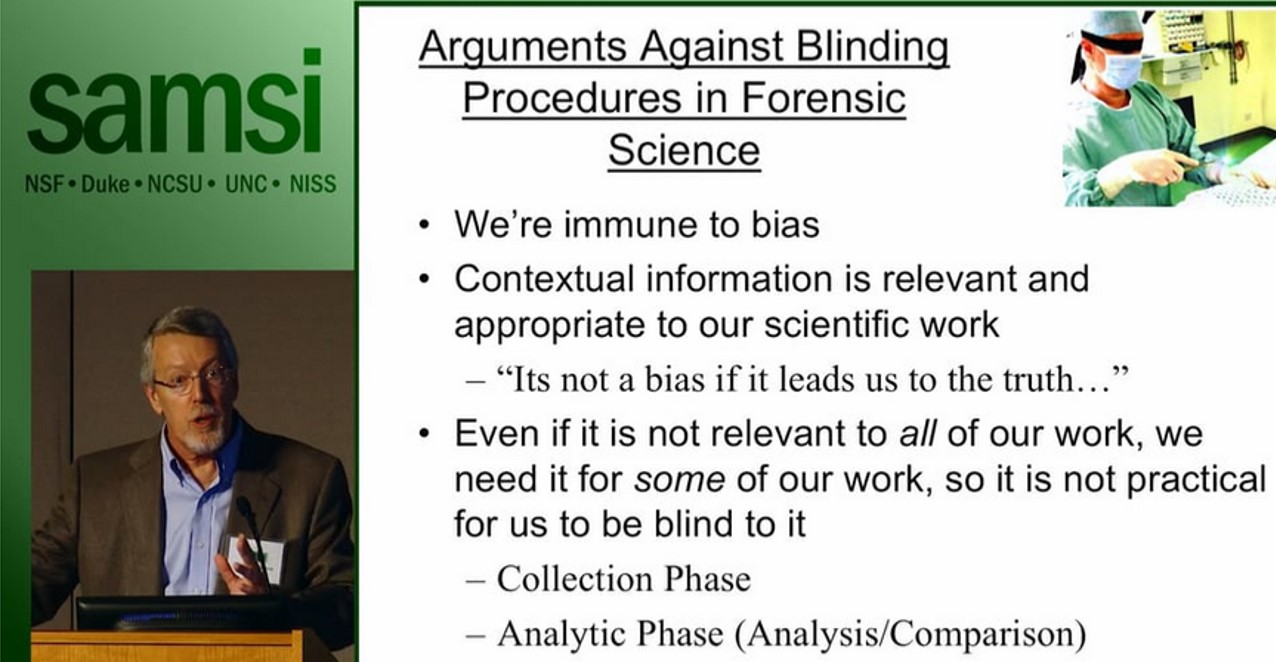Managing Contextual Bias in Forensic Science - William Thompson, University of California at Irvine
September 1, 2016
Keywords:
- DNA
- Contextual bias
- expert judgement
- Bias
- latent fingerprints
- reducing bias
- Blinding
Abstract
Contextual bias is said to occur in forensic science when examiners are influenced by taskirrelevant information--i.e., information that is irrelevant to the analytic tasks examiners are asked to perform. A first step in addressing contextual bias is deciding what facts are task-relevant and task-irrelevant for common forensic tasks. For example, should a latent print
examiner's conclusions on the source of a print be influenced by information about a suspect's criminal history? The suspect's alibi? Whether other evidence incriminates the suspect? A formal standard for task-relevance, which provides clear answers to these questions, will be proposed. The next step in addressing contextual bias is the development of context management procedures that allow analysts to have access to information that is task-relevant while shielding them from exposure to information that is task-irrelevant and potentially biasing. Various possible context management procedures will be discussed. Along the way the talk will address the underlying psychological mechanisms that create the potential for contextual bias and make the problem difficult to manage.
